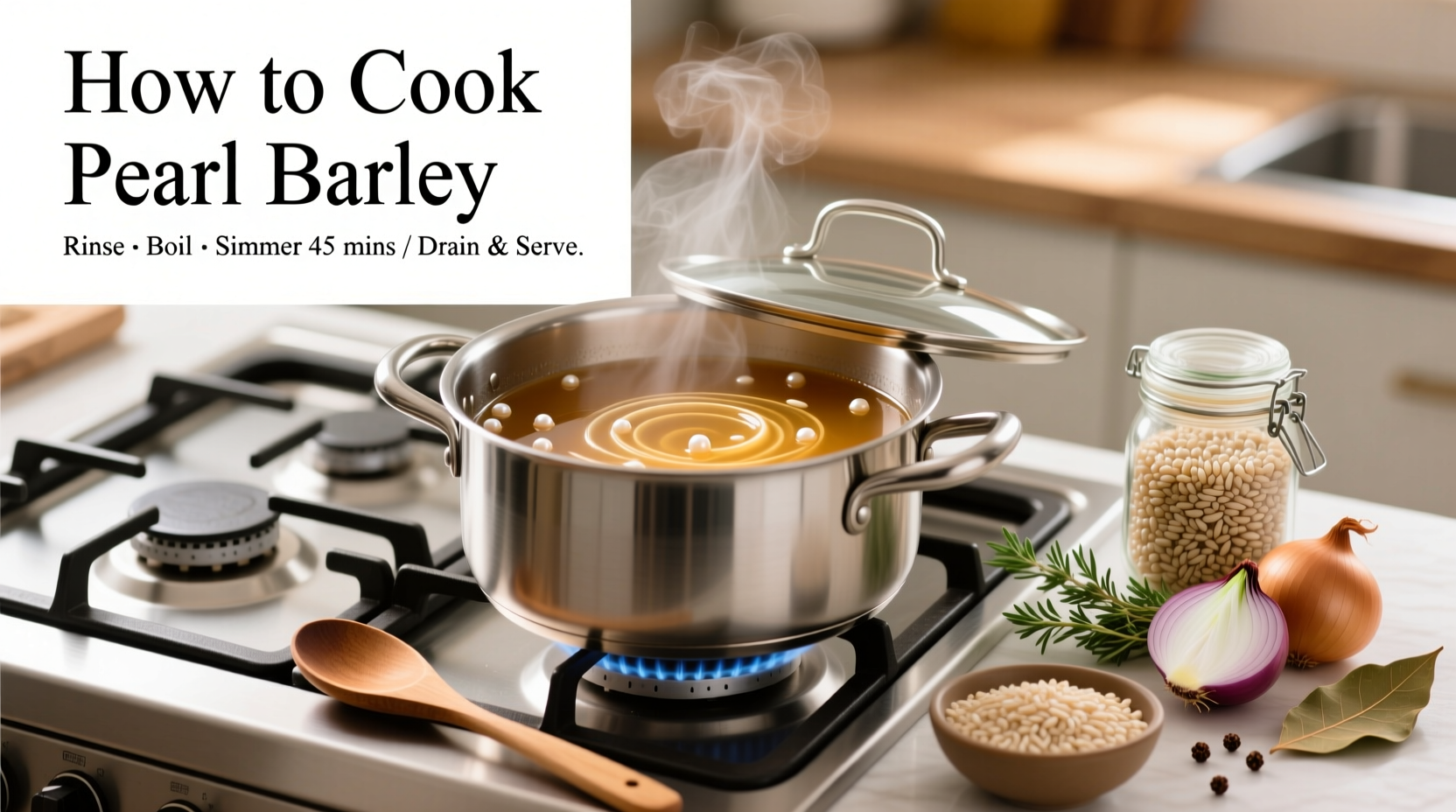The Complete Guide to Cooking Perfect Pearl Barley
Discover why pearl barley deserves a permanent spot in your pantry. This ancient grain delivers a delightful chewy texture and nutty flavor that elevates soups, salads, and side dishes. Unlike refined grains, pearl barley retains most of its nutritional value while being significantly faster to cook than hulled barley.
Why Pearl Barley Outperforms Other Grains
Pearl barley undergoes minimal processing compared to quick-cooking varieties, preserving 85% of its original fiber content according to USDA FoodData Central. This nutritional advantage translates to 8 grams of fiber per cooked cup—nearly triple that of brown rice. The grain's unique soluble fiber content helps maintain steady blood sugar levels, making it an excellent choice for health-conscious cooks.

Essential Preparation Steps
Professional chefs universally recommend rinsing pearl barley before cooking. This simple step removes excess starch that causes clumping and improves texture dramatically. Unlike rice, pearl barley benefits from a 15-minute soak which reduces cooking time by 20% and creates more uniform results.
| Cooking Method | Water Ratio | Active Time | Total Time |
|---|---|---|---|
| Stovetop (soaked) | 2.5:1 | 5 minutes | 25-30 minutes |
| Stovetop (unsoaked) | 3:1 | 5 minutes | 40-45 minutes |
| Instant Pot | 1.5:1 | 2 minutes | 15 minutes |
Step-by-Step Stovetop Method
Follow these chef-tested steps for foolproof results:
- Rinse 1 cup pearl barley under cold water for 30 seconds
- Soak in 2 cups water for 15 minutes (optional but recommended)
- Drain and combine with 2.5 cups fresh water or broth
- Bring to boil, then reduce heat to low and cover
- Cook for 25 minutes until tender but still chewy
- Remove from heat and let stand covered for 5 minutes
- Fluff with fork before serving
The critical visual cue comes at the 20-minute mark—grains should have doubled in size with a slight white dot visible in the center. Overcooking causes the characteristic chewy texture to disappear, resulting in mushy grains that can't hold up in salads or grain bowls.
Instant Pot Shortcut Method
For time-pressed cooks, the pressure cooker delivers excellent results:
- Use 1.5 cups liquid per cup of rinsed barley
- Cook on high pressure for 12 minutes
- Natural release for 10 minutes before quick release
- Drain any excess liquid immediately
This method produces perfectly textured barley in under 25 minutes total time. The Natural release period is crucial—releasing pressure too soon results in undercooked centers while waiting too long creates mushiness.
Troubleshooting Common Problems
Mushy barley: Usually caused by excessive water or overcooking. Next time, reduce liquid by 1/4 cup and check for doneness 5 minutes early.
Hard centers: Indicates insufficient cooking time or water. Add 1/4 cup hot water and continue cooking in 3-minute increments until tender.
Bitter taste: Rinse barley thoroughly before cooking to remove residual hull particles that cause bitterness. Adding a pinch of salt to cooking water also neutralizes any bitterness.
Storage and Usage Tips
Cooked pearl barley maintains optimal texture for 4 days in the refrigerator when stored in an airtight container with a damp paper towel. For longer storage, freeze portions in freezer bags for up to 3 months—thaw overnight in the refrigerator before use.
Professional chefs recommend these applications for perfectly cooked barley:
- Add to vegetable soups during the last 10 minutes of cooking
- Mix with roasted vegetables and lemon-tahini dressing for grain bowls
- Substitute for rice in pilafs and stuffings
- Combine with fresh herbs and feta for Mediterranean salads
When incorporating cooked barley into cold salads, toss while slightly warm with your dressing to help the grains absorb flavors more effectively—a technique commonly used in professional kitchens to maximize flavor penetration.











 浙公网安备
33010002000092号
浙公网安备
33010002000092号 浙B2-20120091-4
浙B2-20120091-4